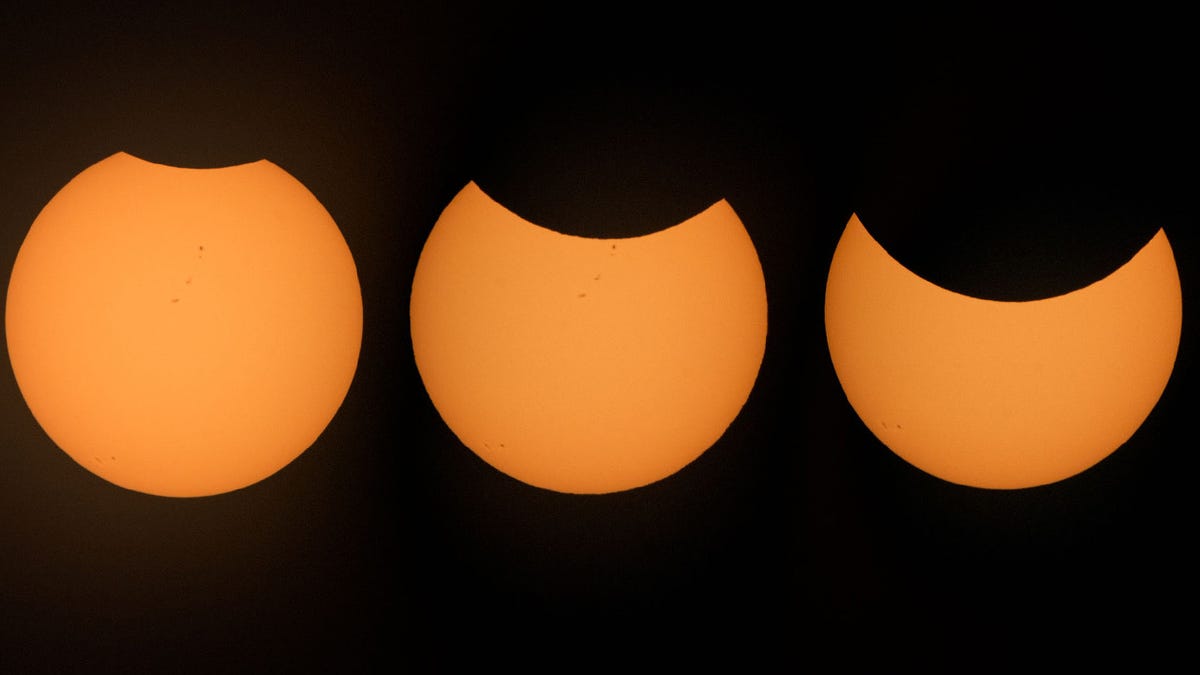How to See the First Solar Eclipse of 2022 Take a Bite Out of the Sun
Saturday's partial solar eclipse will be visible in parts of South America and Antarctica.

This series of images taken Aug. 21, 2017, from NASA's Johnson Space Center in Houston shows the sun partially eclipsed.
Lucky skywatchers in parts of South America and Antarctica (and some southern ocean areas) will get to see a stunning celestial sight on Saturday when the moon takes a chunk out of the sun during a partial solar eclipse .
The eclipse will occur around sunset. "As it sets in the west on the evening of April 30, the sun will appear partially eclipsed for those with clear skies in Chile, Argentina, most of Uruguay, western Paraguay, southwestern Bolivia, southeastern Peru and a small area of southwestern Brazil," NASA said in a statement last week.
The light area represents daytime. The dark area represents nighttime. The rounded, moving shadow shows the area where the partial solar eclipse of April 30 will be visible.
A solar eclipse happens when the moon moves between the sun and Earth, draping its shadow onto the planet. A partial eclipse means the moon is blocking only part of the sun's disk, so it looks like it's taking a rounded bite out of it.
If you're in a viewing area, you can dial in your local time for the eclipse through Timeanddate.com.
The narrow coverage area of the eclipse means live feeds might be hard to come by this time around, but Timeanddate.com has a stream scheduled to kick off at 12:30 p.m. PT on Saturday.
There are two solar and two lunar eclipses on tap for this year. The next solar eclipse will also be partial and won't take place until Oct. 25. While lunar eclipses can be safely viewed with the naked eye, precautions are needed for solar eclipses. Here's everything you need to know to safely enjoy an eclipse.

